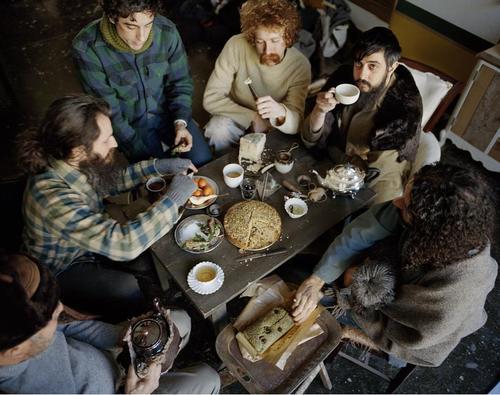Peggy Orenstein had a piece this weekend in the New York Times Magazine, titled “The Femivore’s Dilemma.” She starts her article by talking about all her hip friends—cracking wise about “the Vatican of locavorism” and laughs, “Apparently it is no longer enough to know the name of the farm your eggs came from; now you need to know the name of the actual bird.”
Her feminist friends are now not just staying home to raise the kids, but finding liberation in raising chickens, growing food, and making other necessities. But her casting of backyard hobby gardening as fulfilling the holes in the lives of feminists who wanted to work, as is usual for middle-class feminists, leaves out the fact that fighting to get jobs was a goal of the privileged. Other women were already working, not for fulfillment, but for survival.
In the same way, backyard gardening, in Orenstein’s view, is a new way for feminists to find fulfillment, a way to do more work than just the housework but less work than a full-time job. Meanwhile, Warwick Sabin points out:
“It used to be that keeping a few free-range chickens, tending some grain-fed hogs, and raising a small vegetable garden was how people simply survived. Now these are often vanity projects for young hipsters and retired hedge-fund executives who have discovered the forgotten pleasures of “heirloom” tomatoes and artisanal sausage. Incredibly, we’ve reached a point in our society where things that humans have done for thousands of years—grow a vegetable, smoke or cure a piece of meat—now provide the grounds for smug satisfaction.”
via Global Comment.
-Julia Childless

 “Even better, Barneys plans to spend the whole fall celebrating food culture, with stores across the country hosting tastings, book signings, and panel discussions”
“Even better, Barneys plans to spend the whole fall celebrating food culture, with stores across the country hosting tastings, book signings, and panel discussions” I really hope they settle
I really hope they settle 
 I’ve always been fascinated by ortolan eaters, who are so ashamed of what they are doing that part of the ritual involves eating with napkins or masks covering their faces. Ortolans are tiny birds, which are captured alive, force-fed, drowned in brandy, and then cooked and eaten whole. It’s kind of sick and gross (and
I’ve always been fascinated by ortolan eaters, who are so ashamed of what they are doing that part of the ritual involves eating with napkins or masks covering their faces. Ortolans are tiny birds, which are captured alive, force-fed, drowned in brandy, and then cooked and eaten whole. It’s kind of sick and gross (and 
 “
“
